Buenos AiresMap
January There’s a Russian palindrome I’ve always thought to be wonderful, both in terms of form and content, about Argentina beckoning to Negroes. It turns out, however, that there are no Negroes here. Locals will tell you, not without a certain hint of satisfaction, that there used to be some, of course, but they were always put in the front lines in every war—so now there are none left. In fact, there are no dark-skinned people of any kind here: absolutely everyone looks European. The country’s coat of arms. Argentina—your dependable partner. The stick features a Santa hat at the top, while a balding sun peeks out from behind the oval.  Argentinians are predominantly a mix of Spaniards and Italians, with some other European varieties thrown in. This explains why there are protests about something or other nearly every day here, except for weekends. There’s also an organization called the Mothers of the Plaza de Mayo, composed of mothers of dissidents who were abducted and killed under the dictatorship. These mothers gather on the Plaza de Mayo (the square in front of the presidential palace) every Thursday. This is the reason their logo—the mother’s shawl—appears in several places on the pavestones. 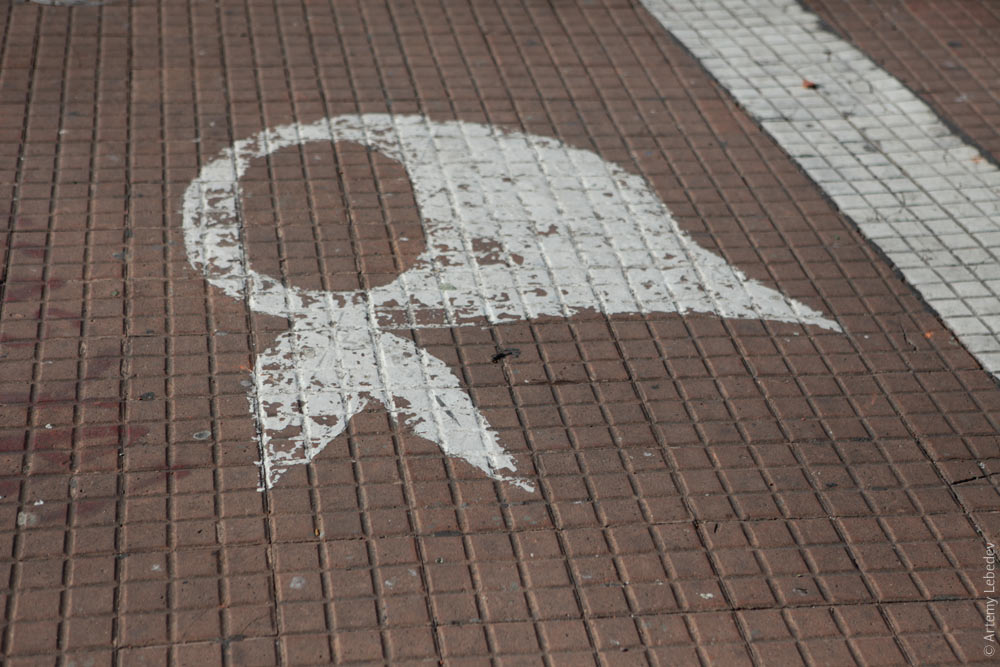 Buenos Aires is a large and interesting city. 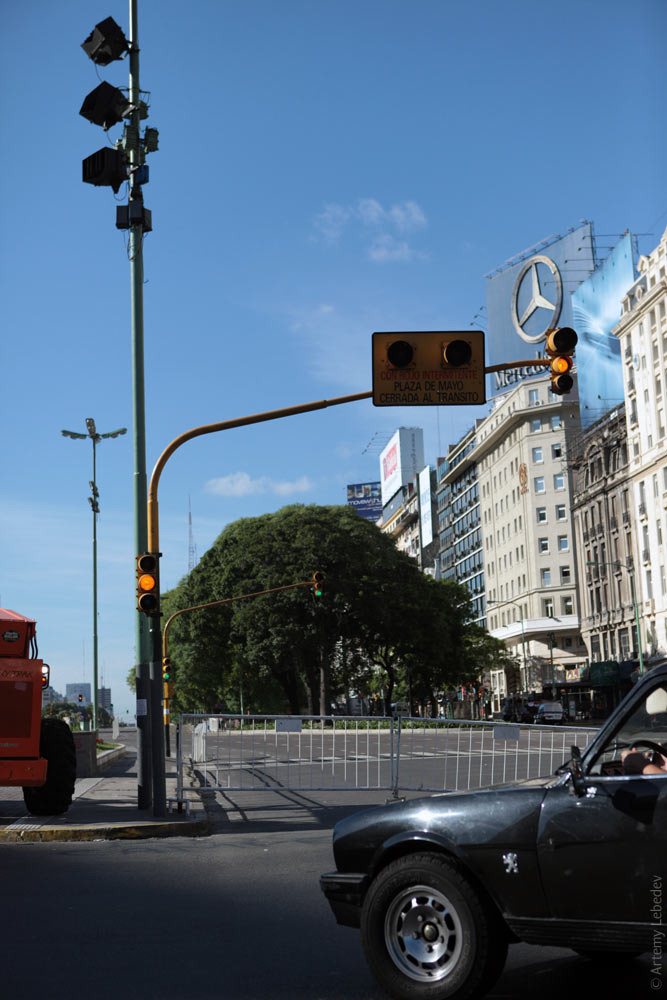 Parts of it resemble Paris or New York. 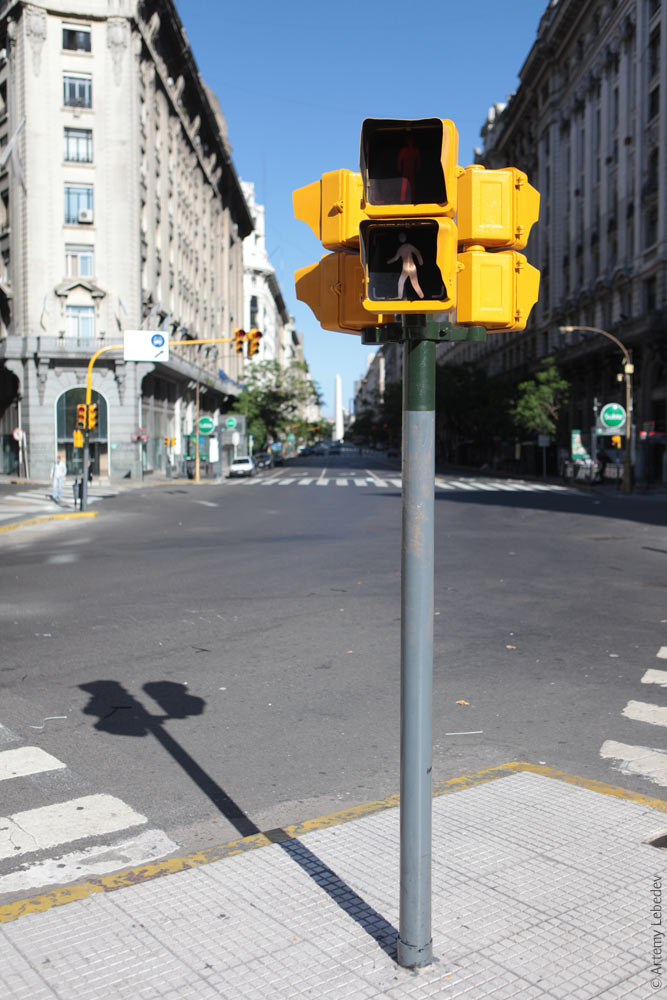 They have a proprietary design for wheelchair ramps here. 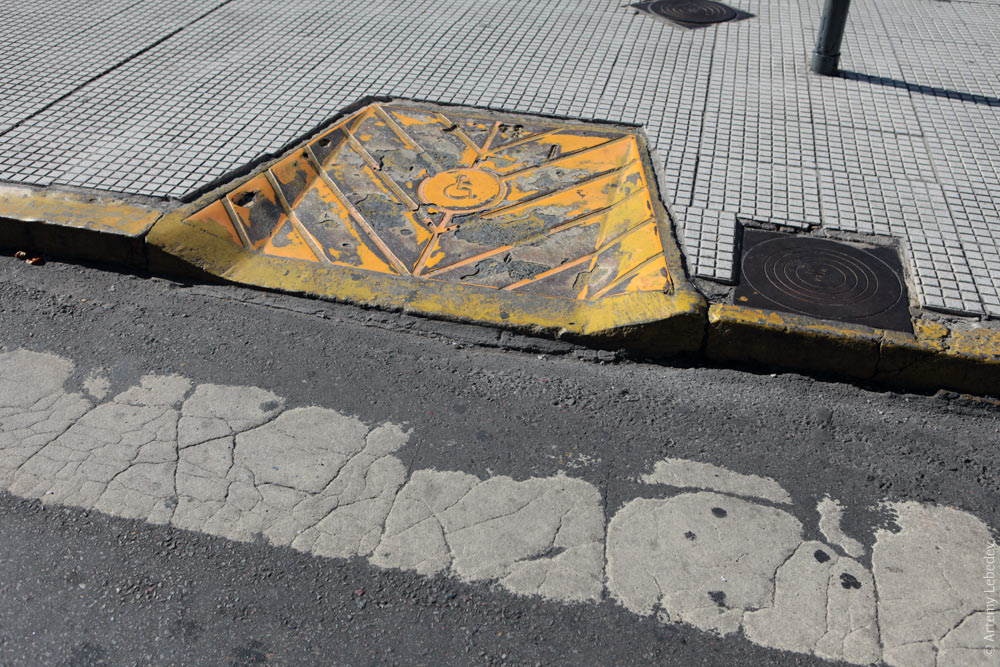 An old, homey metro station with ancient turnstiles that remind me of a Soviet factory control post. The two new turnstiles stand out like gold teeth. 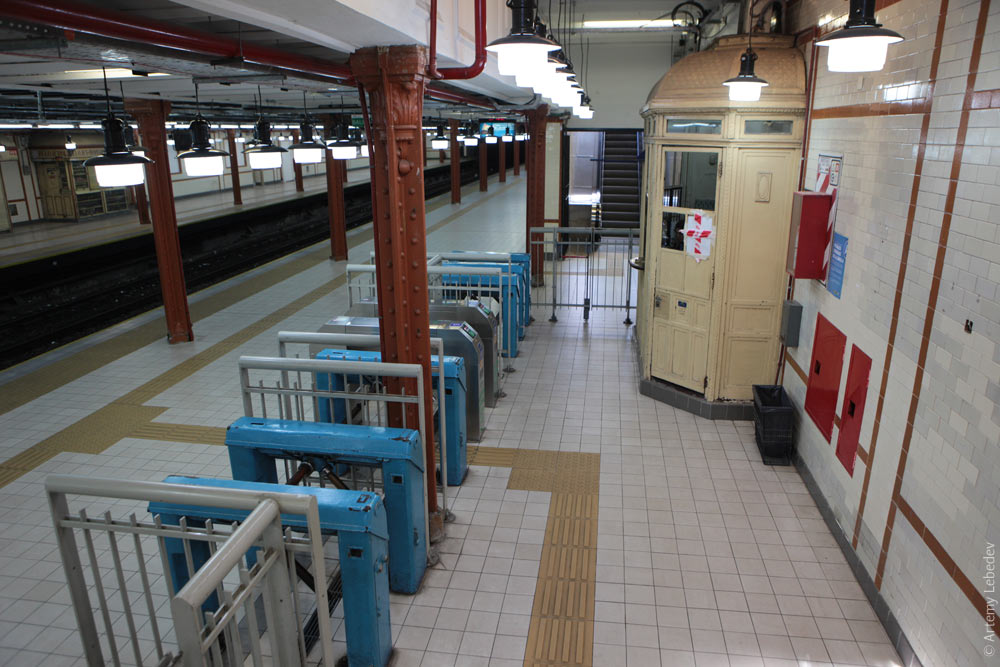 A surviving ticket booth serves as a reminder of the loving touch that all things used to possess in the old days. Take the built-in tray for change and tickets, for instance—it was made with people in mind, and that still shows today. After all, it’s not like the physical qualities of coins or the dimensions of the human hand have changed since the 1930s. (Compare this to the vile earthenware cafeteria saucers used in the Moscow Metro.) The cashier has the obligatory mug of maté at his post. 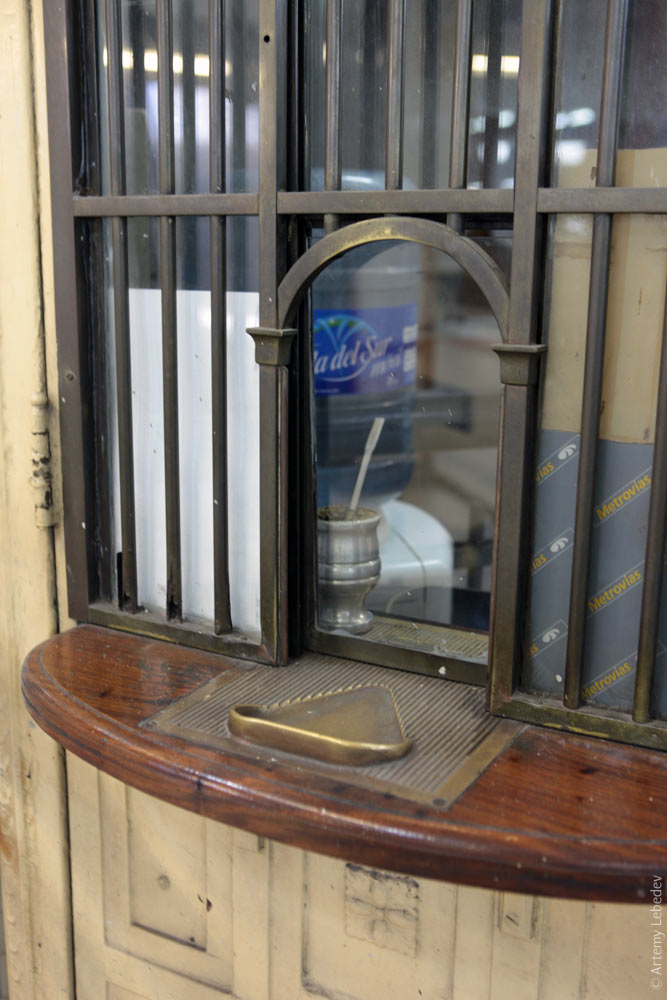 A slacker in a currency exchange kiosk. 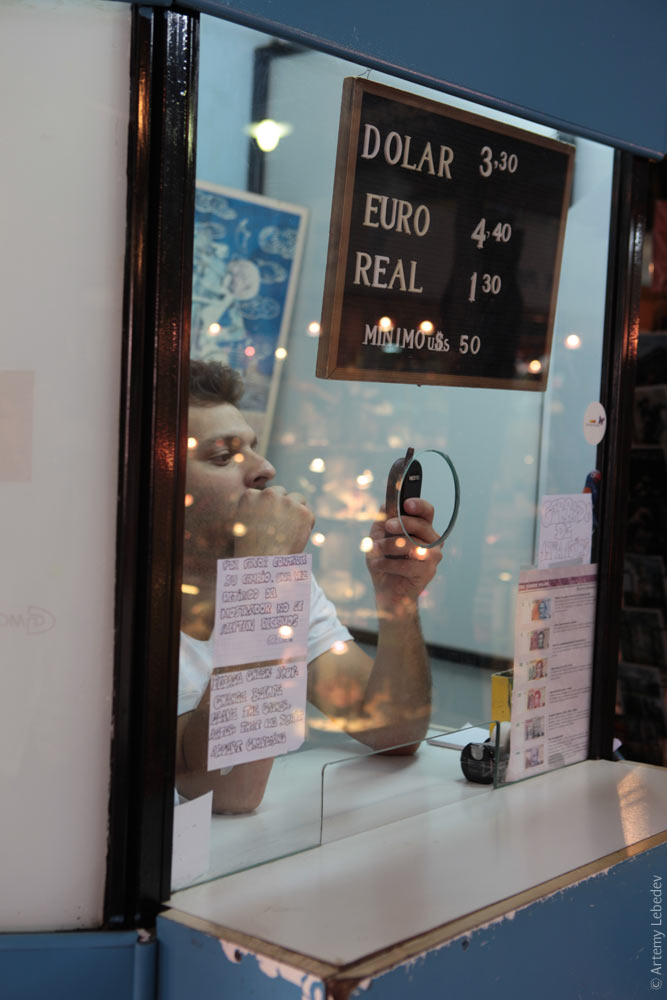 An obsolescent phone booth model. 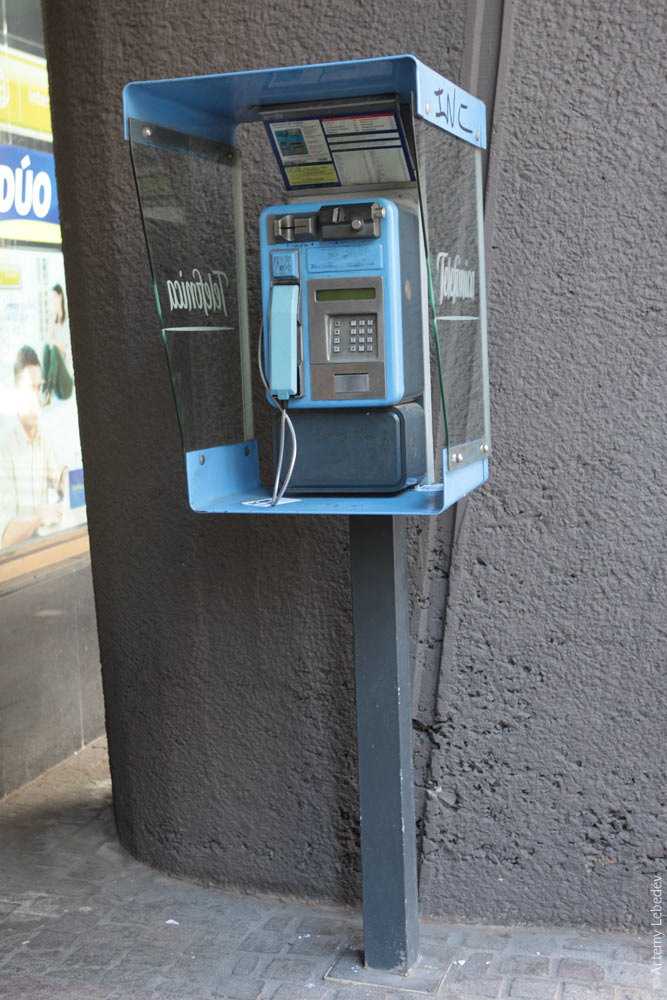 A contemporary phone booth. Incidentally, it’s an exact copy of the ones in Madrid and Santiago. Even the phone company is the same. 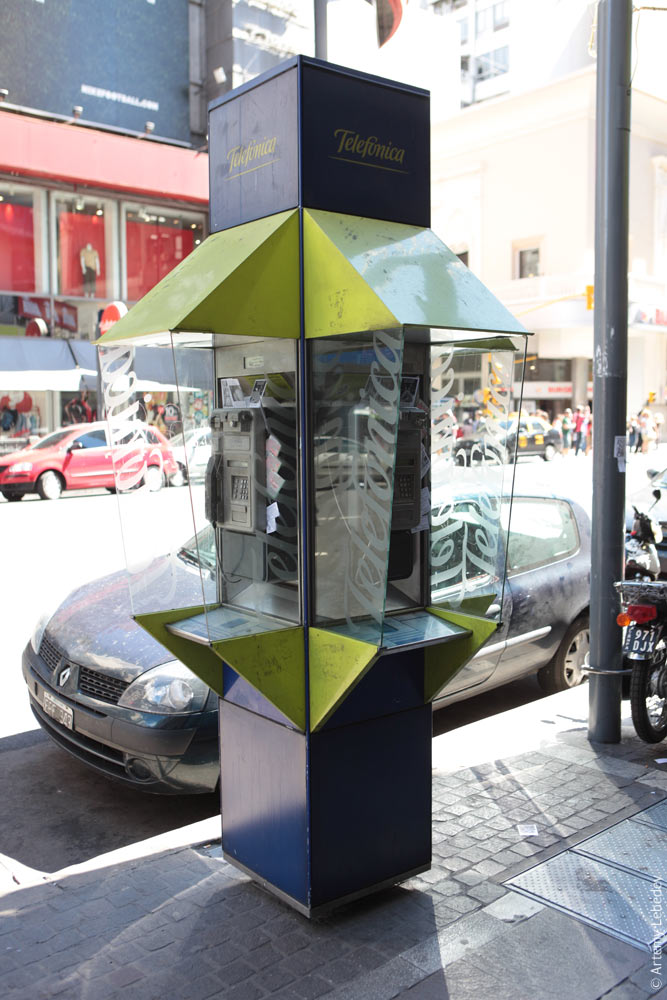 A street post box (although it resembles its siblings in London, it’s purely indigenous) and four types of trash. 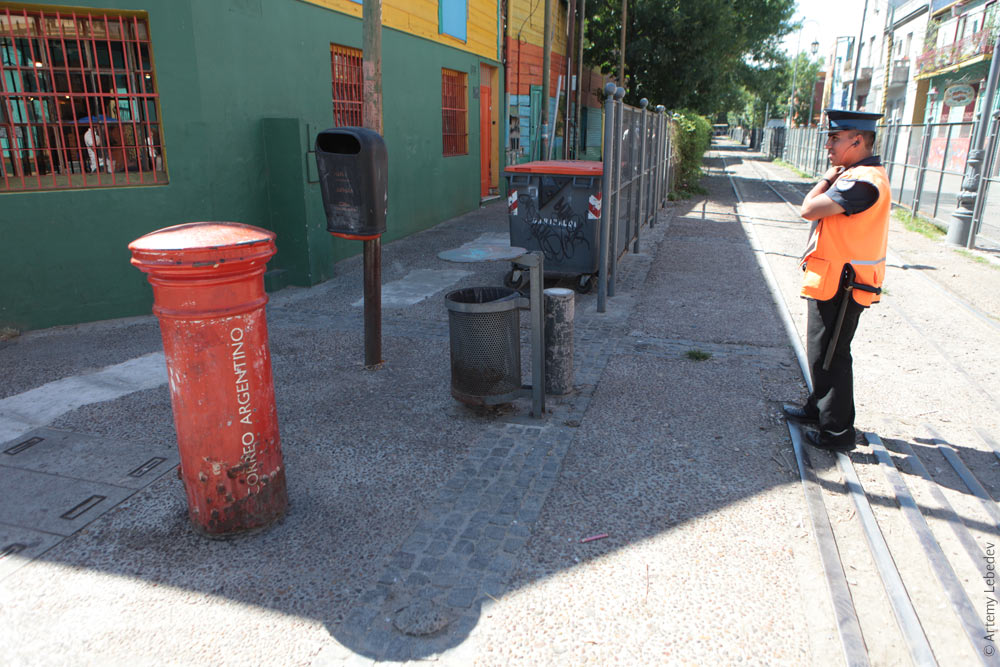 A street trash basket on a stand. I first came across something of this sort in Punta Arenas, Chile. There are particularly many of them in Brazil. 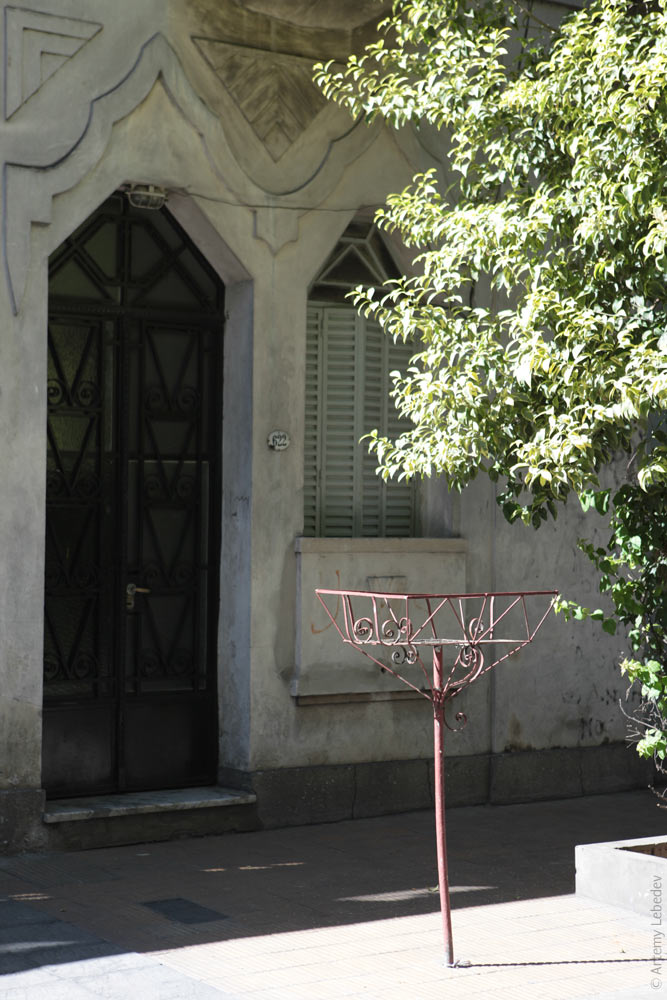 Many buildings have a driveway leading to the garage or interior courtyard. These always have a little traffic light outside to indicate whether it’s currently safe to enter. When a car is exiting, pedestrians will see a flashing red signal. 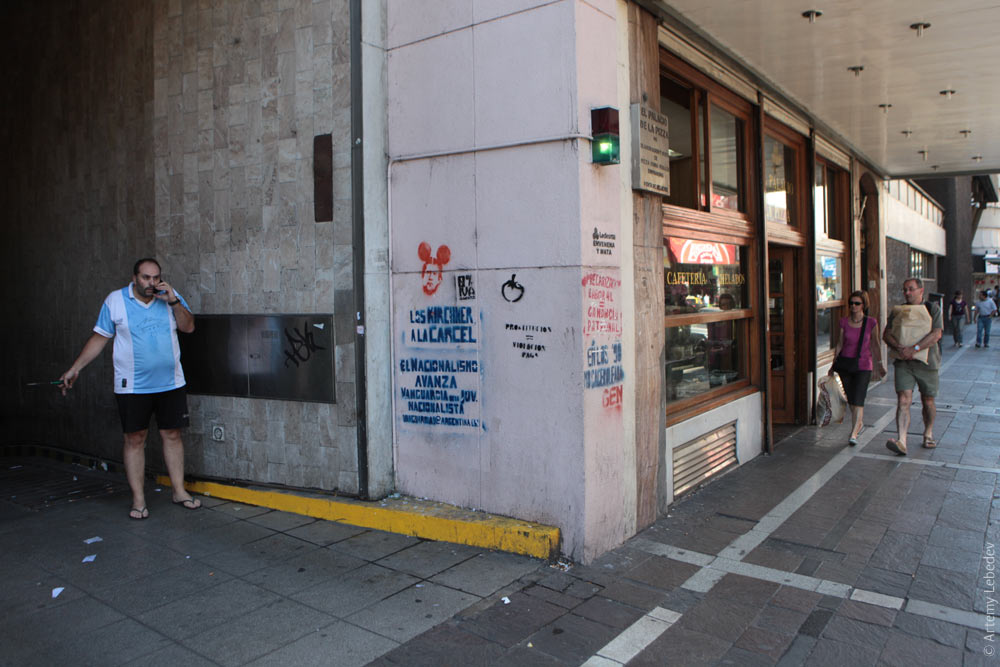 One of the main streets has trendy new streetlamps with floodlights that shine into reflectors. You see more and more of these around the world now—the diffused light is less harsh on the eyes, but illuminates the street just as well. They also exist in Moscow outside the Ararat Hotel, by the way. 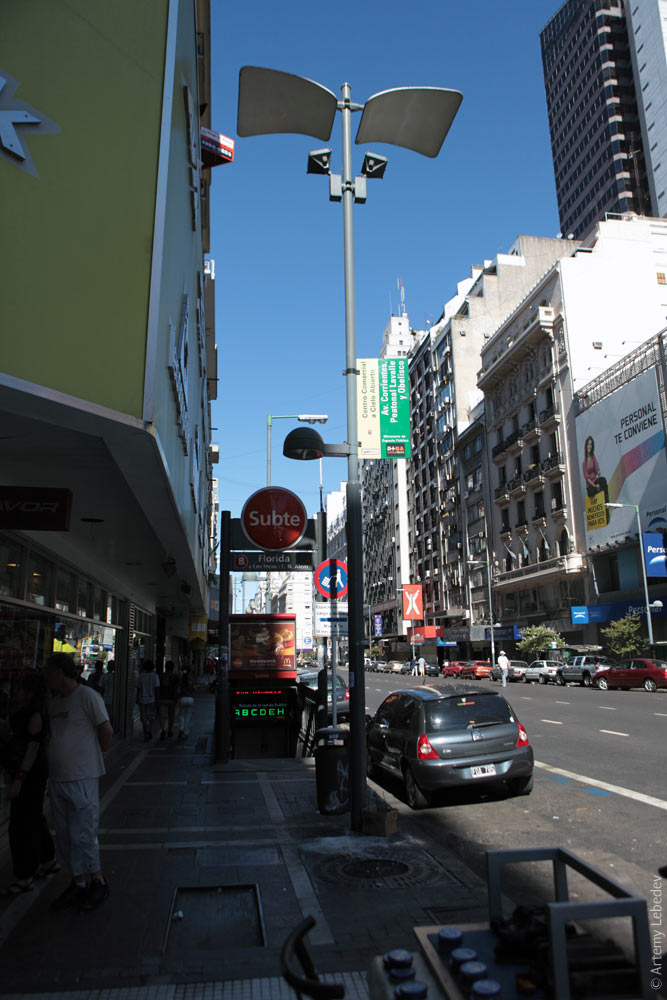 I happened to arrive in Buenos Aires on the starting day of the Paris—Dakar Rally, which was relocated to South America this year and renamed to simply the Dakar Rally. Traffic was shut down across the entire city the day before to welcome participants. A ridiculous number of people turned out for the kickoff. And everyone kept throwing themselves under the wheels of departing participants, robbing them of the valuable first few seconds of advantage. 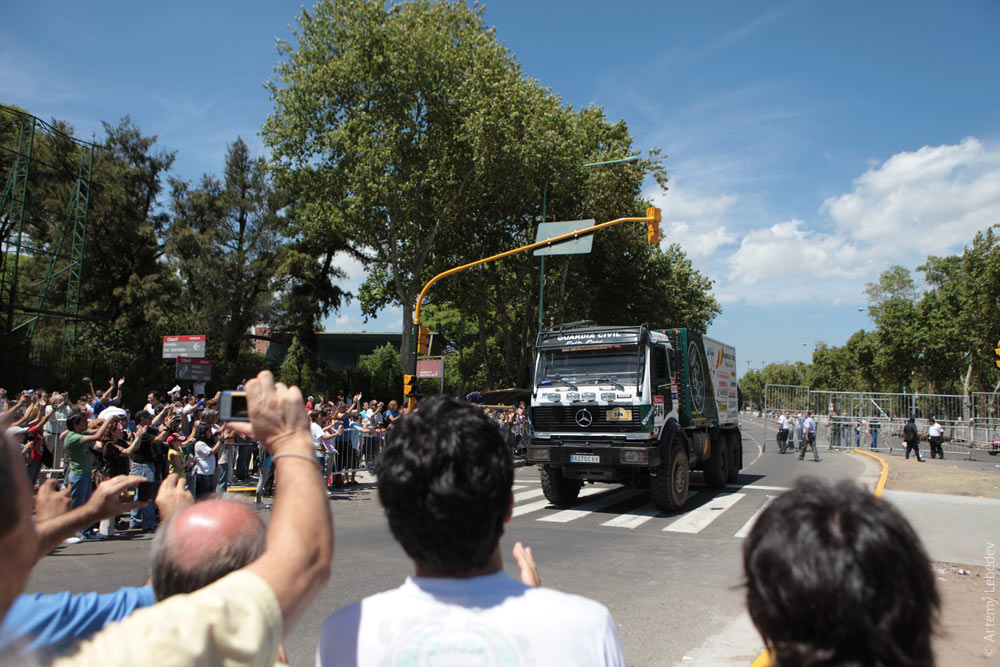 Luckily, no one needed to be dispatched to the nearby Recoleta Cemetery (where Evita already rests). The cemetery resembles Montparnasse in Paris—the burial vaults smoothly transition into the tall buildings around them. 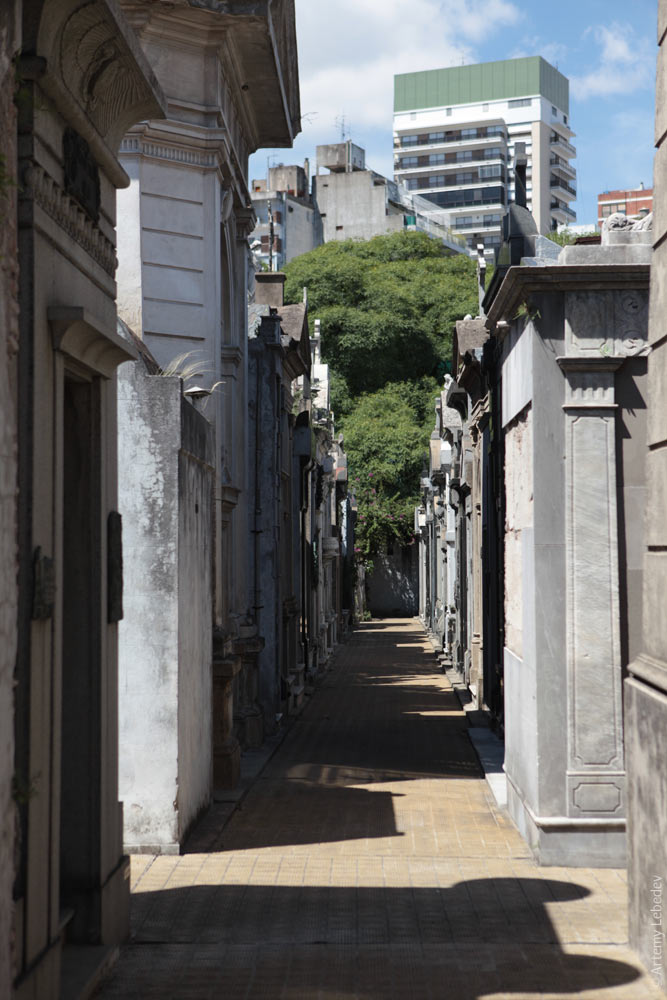 Dog walking is a popular occupation in Buenos Aires. Those too lazy to walk their dog can pay someone else a modest sum to do it for them. Saturday is generally the dog walkers’ day off, but I was lucky to catch a few. Usually, they have what seems like twenty leashed dogs at once. 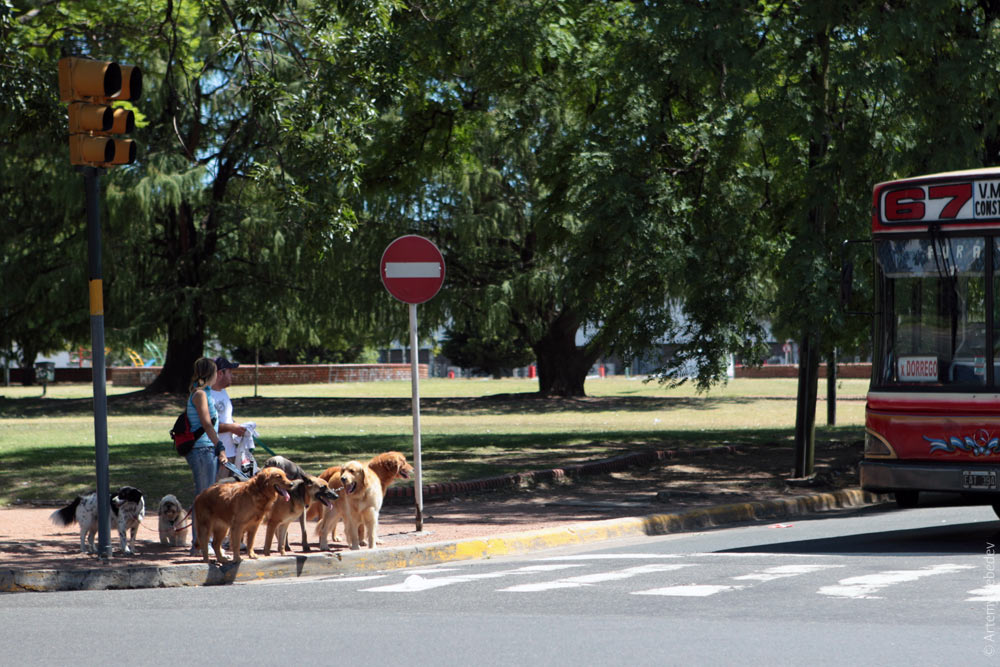 Some people even take their cats out on a leash for some air. 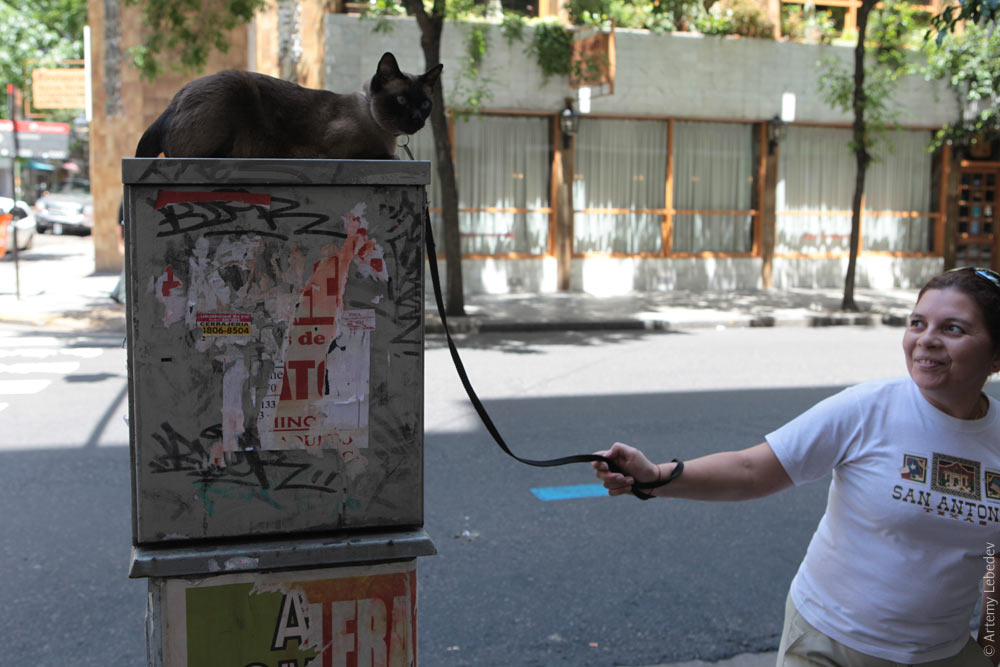 Spiderman’s headquarters are located right nearby. Multitudes of wires run from rooftop to rooftop—all across the city. 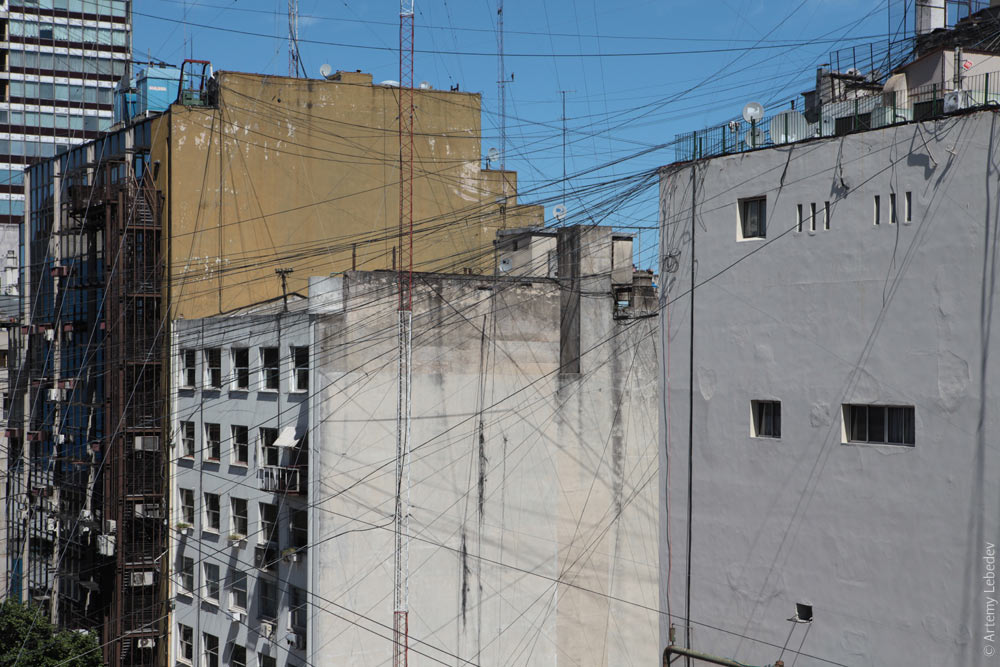 A typical Buenos Aires street sign with advertising. Ones without ads don’t exist.  Like in Uruguay, all the cars here are at least a decade old. New ones are nowhere to be seen. 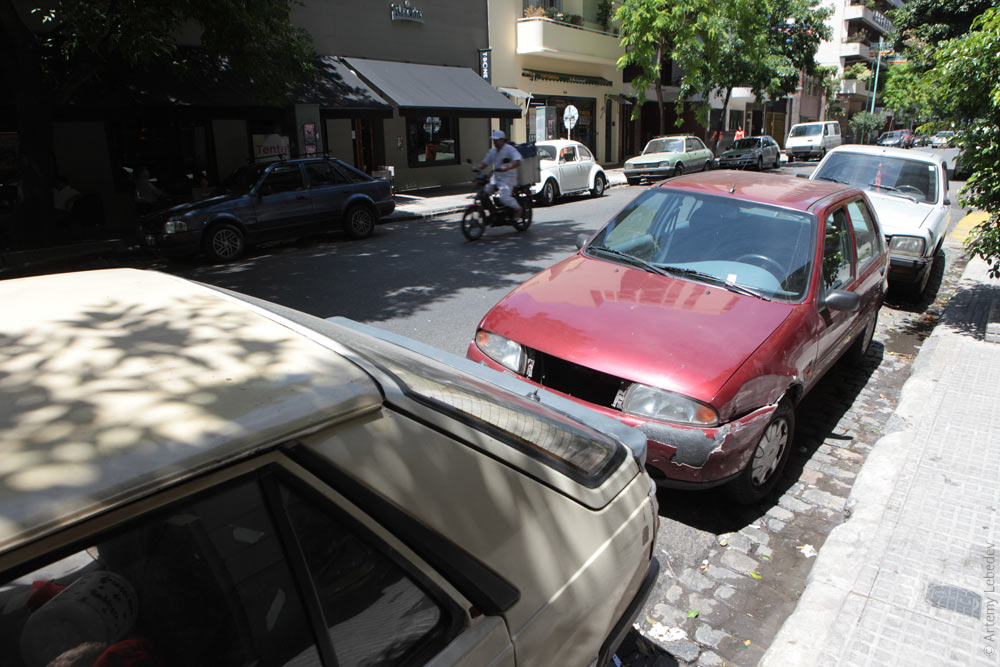 The Argentinians invented an ingenious system to pump up truck and bus tires while on the move. But they failed to patent it. Now all their neighbors, especially Brazil, use this system across the board. You can even retrofit an old truck with it. I’ve never encountered anything of the sort on other continents. 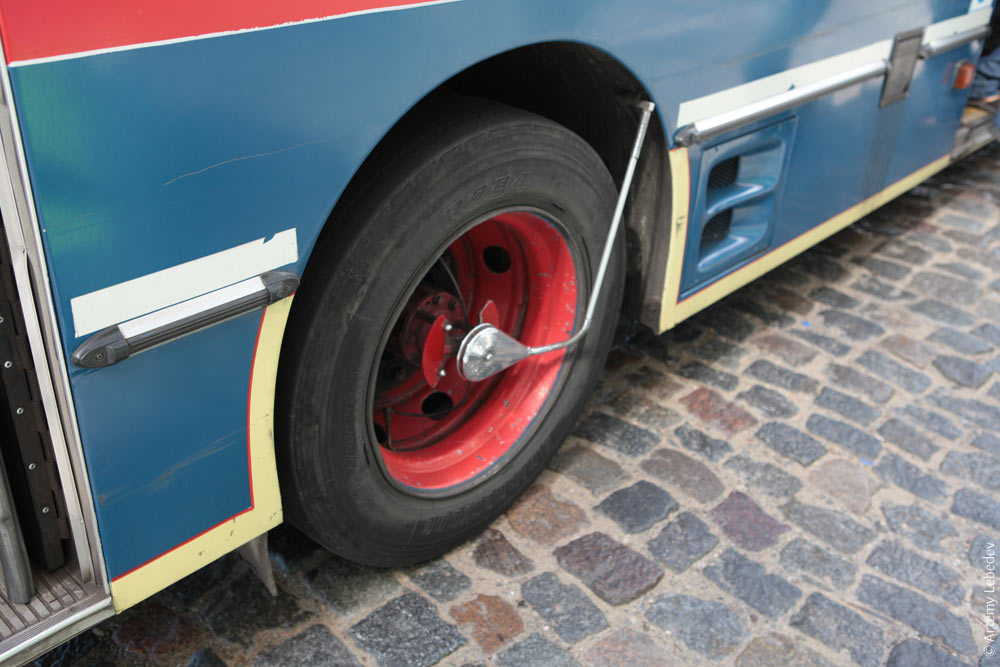 A pedestrian.  A child. La-la-la. Skipping along, school bag in hand. 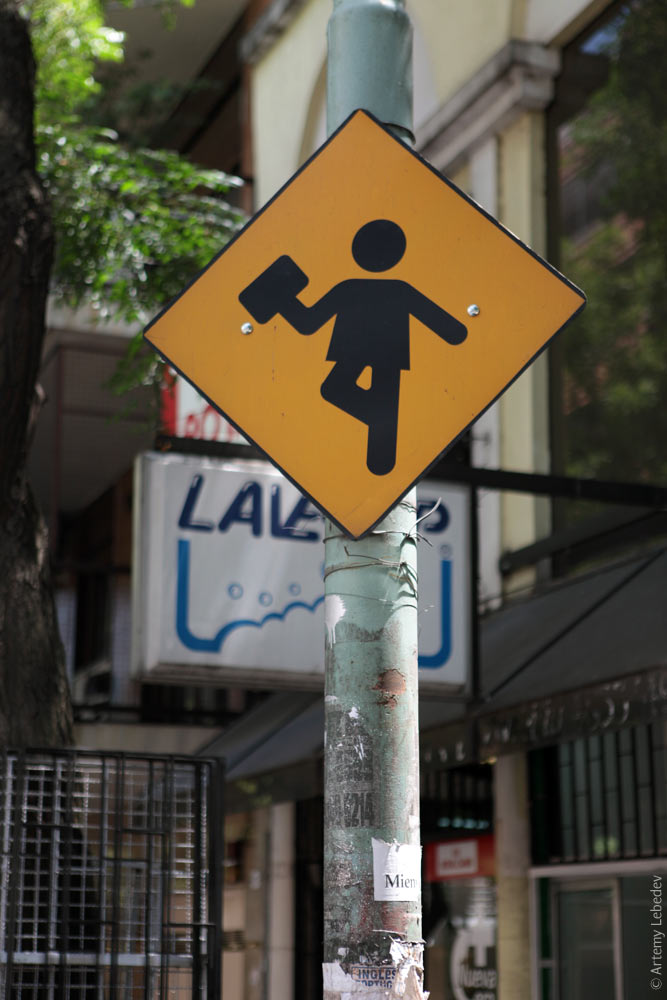 People. The adult is always holding the child by the elbow, as if about to take him to the principal’s office. 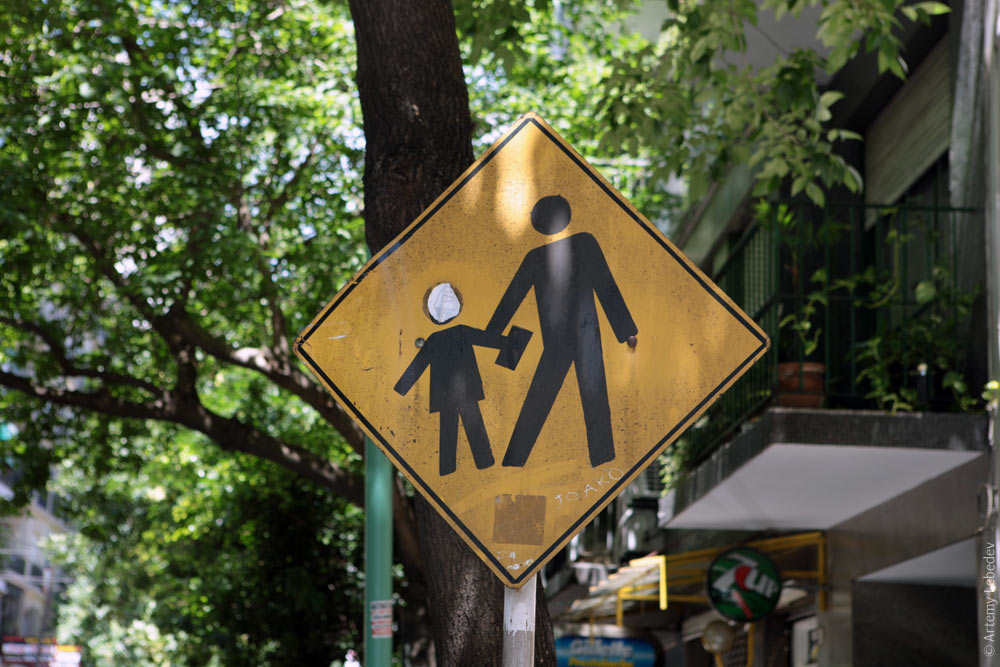 A rare sign. 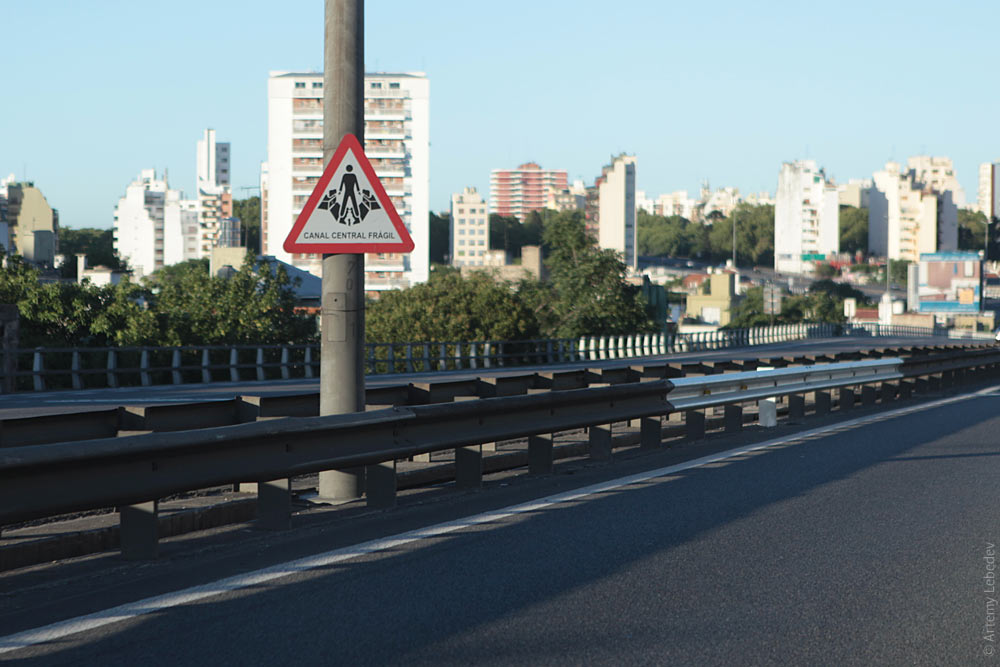 The only thing I could never get accustomed to is the use of the red prohibitive ring on prescriptive signs (Ireland is similarly confusing). The top sign is clear: you can’t go left around the obstacle. But the bottom sign totally makes my European brain short-circuit. According to all our rules, this means you can’t go right, either. But here, it means, “This way, dearest, go right.” I really think that the first thing every country ought to adopt from the States is the sign depicted on the very first photo in my account of my trip across the US. It could replace this idiotic assembly without the slightest detriment to comprehension. 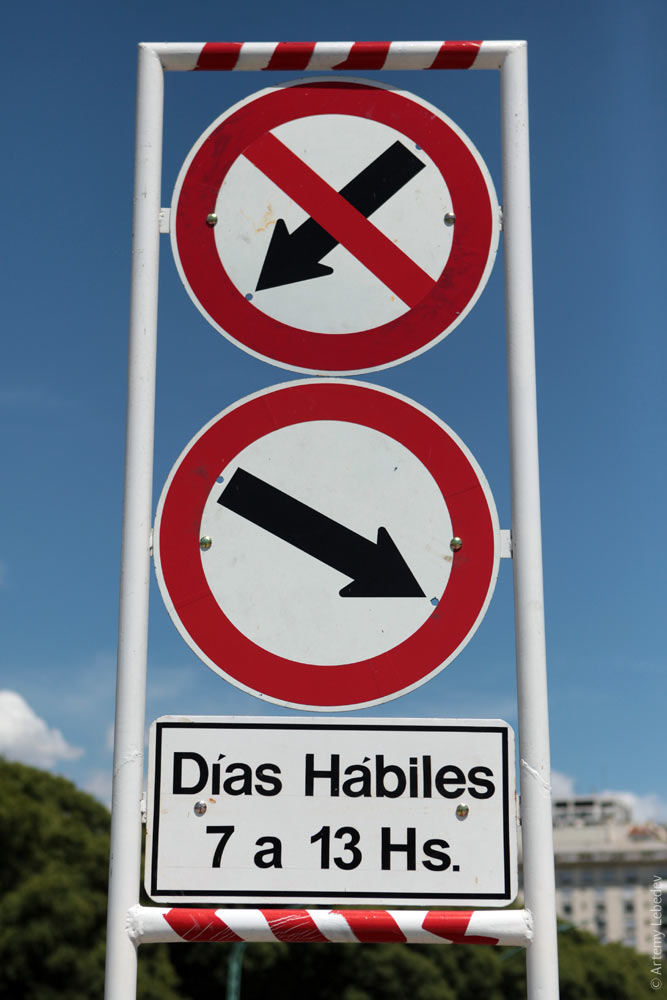 A unique local sign: commercial vehicle loading and unloading. It’s interesting to compare this to an analogous sign in Uruguay, where the dude is depicted unloading a box from the back of a parked truck.  All good things must soon come to an end: it’s time to fly to Paraguay. Argentina remains in my plans for the future. 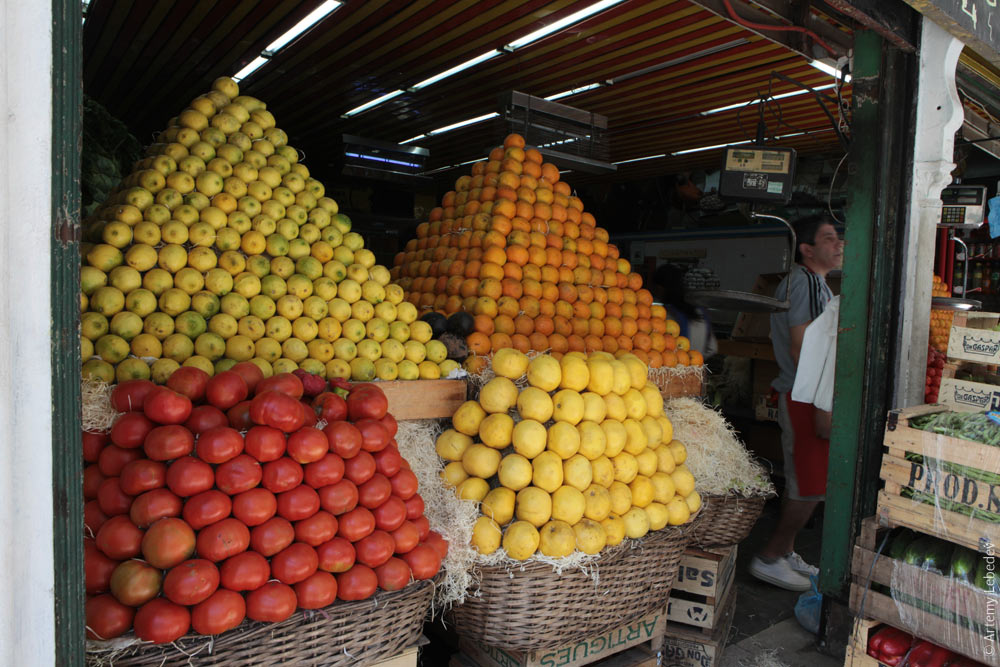 |